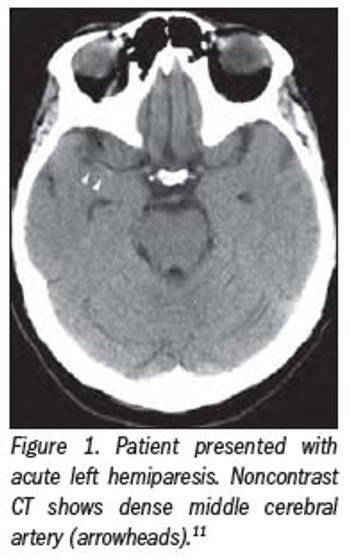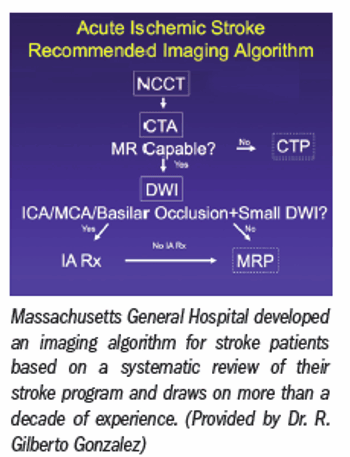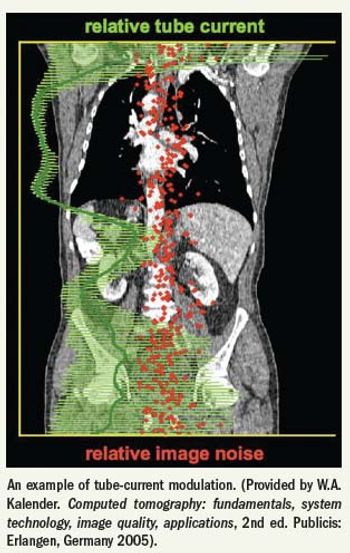
A study from MD Anderson shows that, in assessing the appropriate CT dose, a lot of less may be more.

A study from MD Anderson shows that, in assessing the appropriate CT dose, a lot of less may be more.

To reduce discomfort and damage to frail internal tissues in elderly patients, gastroenterologists may perform CT colonography with minimal preparation.

After learning of the CT scan outcomes, physicians changed their diagnoses for 49 percent of patients, and changed management plans for 42 percent, according to a recent study. Doctors decreased the number of those who were initially going to be kept for observation by 44 percent, while 20 percent of patients who were to be admitted were sent home instead.

Two new reports reveal on the risks of radiation damage to sensitive tissues among women undergoing CT angiography of the heart.

GE Healthcare announced recently that the FDA has approved the first imaging agent to help physicians in evaluating neurodegenerative movement disorders.

A small study reveals that perfusion CT findings of blood-brain barrier permeability above a specified volume at the time of admission in patients over the age of 65 treated with tPA can predict two “feared complications”-symptomatic hemorrhagic transformation and malignant edema-with 100 percent sensitivity and specificity.

Top news from a featured radiology search on SearchMedica: hepatocellular carcinoma - "Contrast-enhanced ultrasound for characterisation of hepatic lesions appearing non-hypervascular on CT in chronic liver diseases"

CT protocols for ischemic stroke can be expanded to cover the heart as well as the head and neck, obviating other imaging tests that may be necessary to pinpoint the source of the stroke, a new study finds.

Taste matters when it comes to oral contrast agents, and may affect patient compliance, according to a new study. Patients preferred diluted oral contrast agent iohexol (GE Healthcare’s Omnipaque) to diluted diatrizoate sodium (Mallinckrodt’s Gastroview) when undergoing abdominopelvic CT scanning.

The National Cancer Institute released initial results from a large-scale clinical trial showing lung cancer screening with low-dose CT reduced mortality by 20% when compared to standard chest x-rays.

A molecular imaging technique may prove useful in early assessment of treatment response for cisplatin-resistant ovarian cancer, according to a study published in the Journal of Nuclear Medicine.

CT perfusion for stroke leaped from clinical discussion forums to the front pages in the last 13 months.

Two new DNA-based tests could noninvasively detect colon cancer, but it is unlikely they will replace CT colonography, according to experts. If anything, the tests could replace the fecal occult blood test currently in use.

PET with CT colonography provides an alternative for detecting polyps and cancer in the colon, according to a study published in the Journal of Nuclear Medicine.

Researchers in the radiation oncology department at UCLA’s Jonsson Comprehensive Cancer Center have received a $14 million grant to develop countermeasures that will help treat damage caused by radiological or nuclear threats such as a dirty bomb attack.

From 1998 to 2007, the use of CT or MRI scans in emergency departments for injury-related conditions increased about three-fold without a similar increase in the prevalence of the diagnosis of certain life-threatening trauma-related conditions, according to a study in the October 6 issue of The Journal of the American Medical Association.

It's been a mere eight years since the blurry spots called ground glass opacities (GGOs) that appeared on spiral CTs were first linked to cancer. Already, the first hints are emerging of what they may actually mean to malignant transformation.

NYU will hold its first annual Dual-Energy CT Symposium Oct. 9-10 in New York City. The program is designed for radiologists who have or are considering acquiring a dual-energy scanner, research scientists who are looking to understand current uses of dual-energy CT to stimulate development of translational research projects, and technologists who need a basis in dual-energy terminology and concepts.

The American Academy of Neurology’s new guidelines on using MRI for stroke may represent best practice, but practical issues remain, interviews with several experts revealed.

Almost a quarter of all patients in a recent study who underwent CT angiography had findings outside the heart and great vessels, leading to several serious diagnoses being missed.

Most patients who have been offered colorectal cancer screening but turned it down are willing to undergo CT colonography as long as out-of-pocket fees are reasonable, according to a study.

A growing body of evidence supports the use of CT colonography for colon cancer screening and a U.S. panel should reverse its decision to not endorse the procedure, according to the CT Colonography Coalition.

The scanner could be brand new, but there is a good chance it’s operating with old protocols imported from a previous unit and not optimized for best imaging at the reduced dose levels possible today, a researcher suggests.

Radiation in any form brings risk. Medical radiation as a screening, diagnostic or treatment tool is designed with safeguards in mind to minimize the risk and maximize the benefit of the test or treatment. For instance, if a patient presents with a breast lump that can be felt but not viewed with mammography or ultrasound, medical professionals must employ the most appropriate diagnostic tools that identify potential cancer.

Some nuclear-based breast imaging exams may increase a woman’s risk of developing radiation-induced cancer, according to a special report appearing online and in the October issue of Radiology. However, the radiation dose and risk from mammography are very low.